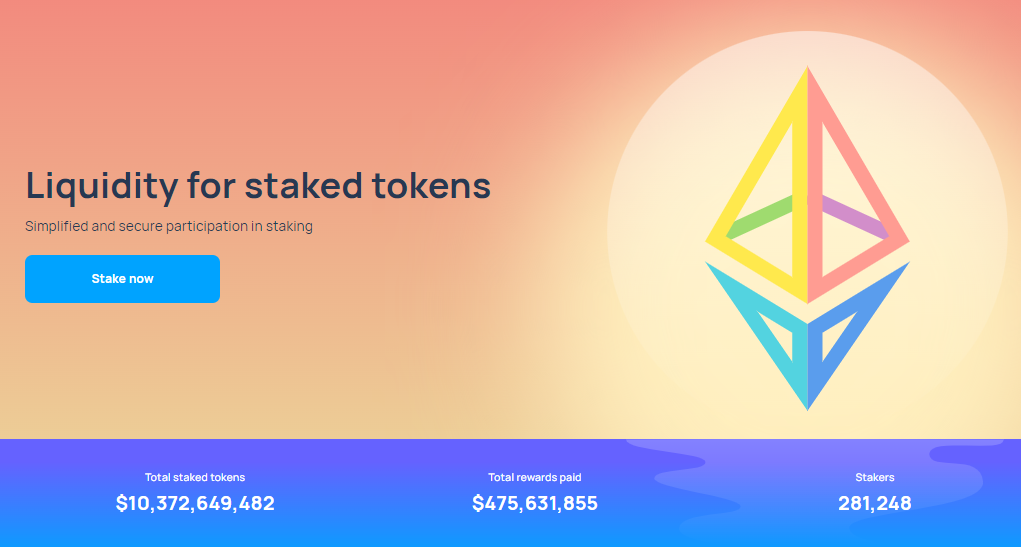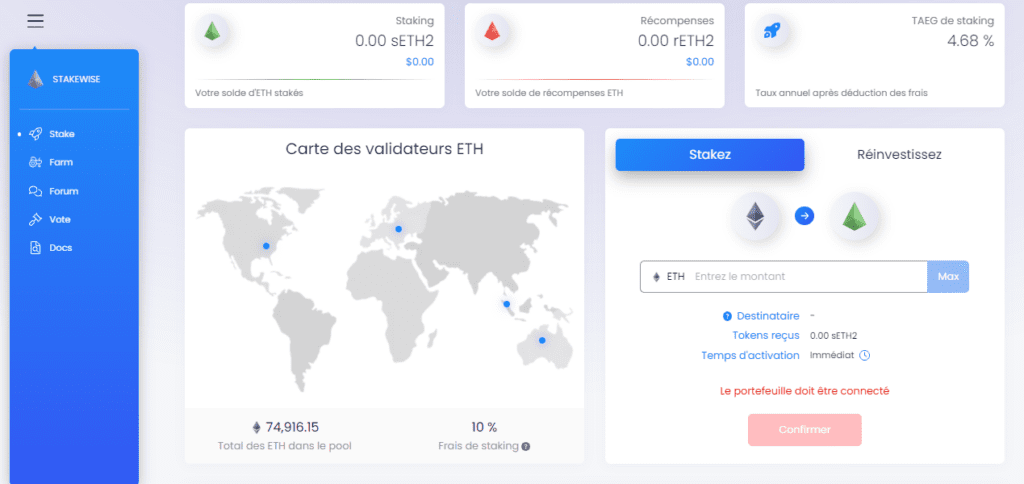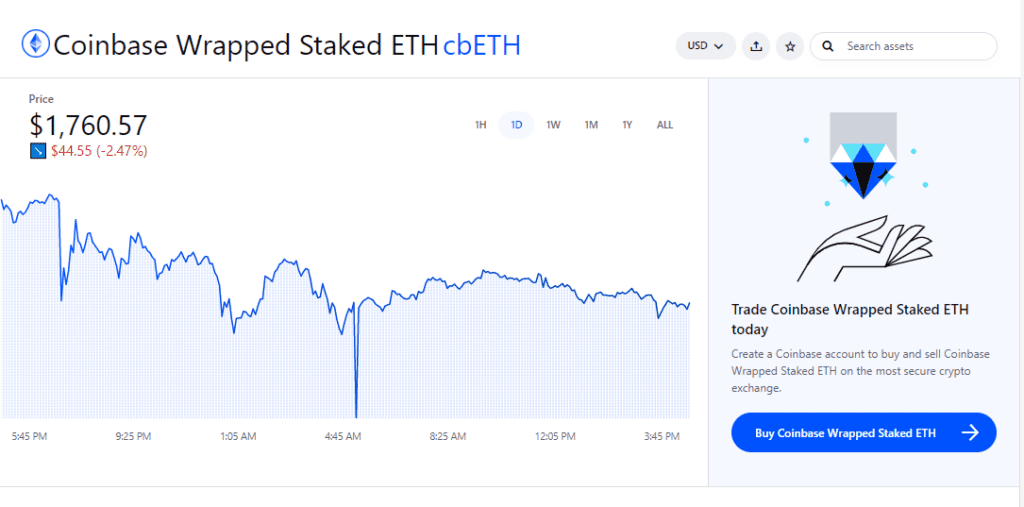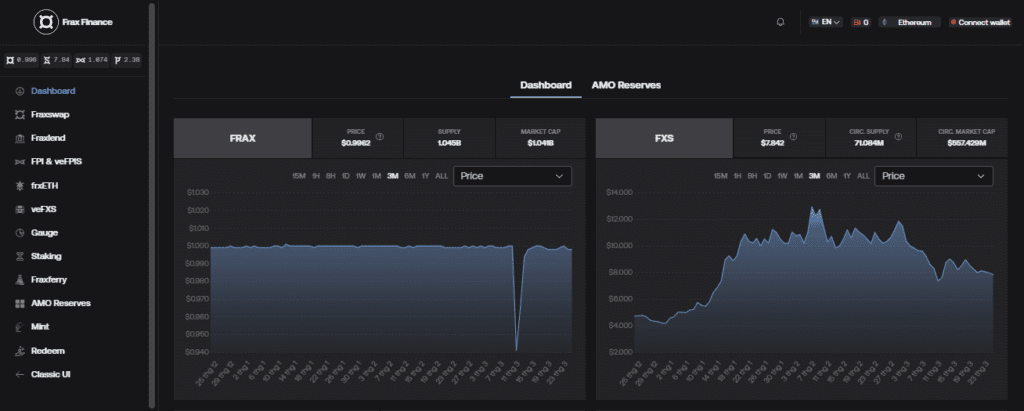Looking to participate in staking on the Ethereum mainnet? Learn how liquid staking derivatives (LSDs) provide an innovative way to earn rewards and generate yield on your ETH holdings.
Introduction
What are liquid staking derivatives?
Liquid Staking Derivatives (LSDs) are a new type of token on the Ethereum mainnet that provide an innovative way to participate in staking. Staking involves validating and supporting the network by holding ETH. There are several main LSDs available on the Ethereum mainnet, including Lido’s stETH, RocketPool’s rETH, Stakewise’s SETH2, and Coinbase’s cbETH. Each LSD has its own mechanism, pricing, and methods for generating secondary liquidity.
To use LSDs, users deposit their ETH into a smart contract, which locks the ETH in the beacon chain with pre-selected validators. In exchange, the user receives a token: the liquid staking derivative. This token represents the underlying staked ETH and accrues value based on rewards in the network, acting as a sort of IOU on the staked ETH. After the Shanghai fork, LSDs will be redeemable for the underlying ETH, along with any additional ETH from the staking yield.
Overall, LSDs provide an alternative to traditional staking and offer users a way to earn rewards on their ETH holdings. Users can earn rewards on the staked ETH and trade LSDs on secondary markets for additional liquidity by depositing their ETH into a smart contract. As with any investment, users should carefully consider their options and the potential risks before participating in liquid staking derivatives.
Why should we use liquid staking derivatives?
Liquid Staking Derivatives (LSDs) are an innovative way to participate in staking on the Ethereum mainnet. Staking involves validating and supporting the network by holding ETH, but LSDs allow users to earn rewards from staking without locking up their funds for a long time.
In addition, LSDs can also be used in DeFi for lending, trading, and borrowing, providing users with more ways to generate yield. LSDs are also an important part of DeFi as they allow users to access ETH staking rewards without needing to run validator nodes themselves. Instead of staked ETH, these liquid staking derivative tokens that represent the staked ETH are used.
Staked ETH now represents a large share of total value locked in DeFi, as users have taken advantage of DeFi’s composability to spread the staked ETH throughout the market. It is worth noting that, as with any investment, users should carefully consider their options and the potential risks before participating in liquid staking derivatives.
Types Of liquid staking derivatives
There are several main LSDs available on the Ethereum mainnet, including Lido’s stETH, RocketPool’s rETH, Stakewise’s SETH2, Coinbase’s cbETH, and FRAX’s sfrxETH. Each LSD has its own mechanism, pricing, and methods for generating secondary liquidity.
stETH

Lido’s stETH is the largest staked ETH token with the largest market share and the most liquidity. However, there are some concerns about centralization and censorship with Lido. stETH is a rebasing token, meaning users continually get more stETH in their wallet over time, which lets stETH represent the growing quantity of underlying ETH represented by staking rewards.
rETH

RocketPool’s rETH is considered the most decentralized liquid staking derivative. It also lets stakers source outside capital to run validator nodes with as little as 16 ETH instead of the usual 32.
rETH is similar to stETH, but instead of rebasing, rETH is worth consistently more ETH over time. rETH is currently trading at a premium compared to other liquid staking derivatives. Because the supply of rETH is constrained by the number of validators the protocol can add, and it is currently full, the token has been bid up by farmers looking to capitalize on pools with heavy rewards.
sETH2

Stakewise’s sETH2 is a smaller competitor in the liquid staking derivative market. They use a unique mechanism to pay out rewards in a separate token, which has kept the SETH2 peg close to 1:1 compared to the other tokens. Their next version will allow all validators access to mint a liquid staking derivative, improving the decentralization of the network. SETH2 is meant to be 1:1 with ETH, while rewards from validators are paid out in a second token RETH.
Stakewise has an ambitious plan to improve the decentralization of validators. The Stakewise protocol Version 3 will allow solo stakers to spin up their own liquid staking derivative. In turn, they will be able to unlock the secondary market liquidity and DeFi composability previously reserved for professional teams creating liquid staking derivatives.
cbETH

Coinbase’s cbETH is a centralized liquid staking derivative run by Coinbase. While one of the larger managers of staked ETH, cbETH is a newer entrant to the market and looks to take advantage of DeFi’s composability to add utility for cbETH holders. cbETH works like an interest-bearing token from Aave or Compound and is worth more ETH over time at an increasing exchange rate. Coinbase is notable as one of the largest validators in the Ethereum network.
Their move into the liquid staking derivative space brings a centralized counterparty option while still retaining the key benefits of LSDs in DeFi. Targeted incentives in the Cure and Balancer markets make this an interesting choice for users not as worried about centralized coins.
sfrxETH

FRAX’s sfrxETH is one of the newest liquid staking derivatives available on the market. Building on FRAX’s reputation for stablecoin assets, frxETH looks to be a stable asset pegged to ETH. In the background, FRAX deposits all ETH in the system to validator nodes and passes the yield back to holders of sfrxETH. The growth of frxETH has been admirable, as FRAX is using a good portion of their voting power in Curve and Convex to direct rewards onto the frxETH pools. sfrxETH is written as a vault contract and constantly gets worth more ETH over time.
Conclusion
LSDs can be used in DeFi for lending, trading, and borrowing and can effectively generate yield on ETH holdings. However, users should carefully consider potential risks with any investment, and some LSDs may have concerns about centralization and censorship. Additionally, the supply of some LSDs may be constrained by the number of validators the protocol can add, leading to high prices. Newer LSDs may not have a proven track record of success or stability, and some may require a minimum amount of ETH to participate, which may be a barrier for smaller investors.
In conclusion, liquid staking derivatives (LSDs) offer a new way to participate in staking on the Ethereum mainnet, allowing users to earn rewards from staking without having to lock up their funds for a long period of time. There are several main LSDs available on the market, each with its own mechanism, pricing, and methods for generating secondary liquidity. Users should carefully consider their options and the potential risks before participating in liquid staking derivatives. Still, with the right approach, LSDs can effectively generate yield on ETH holdings.
DISCLAIMER: The Information on this website is provided as general market commentary and does not constitute investment advice. We encourage you to do your own research before investing.
Join us to keep track of news: https://linktr.ee/coincu
Thana
Coincu News























